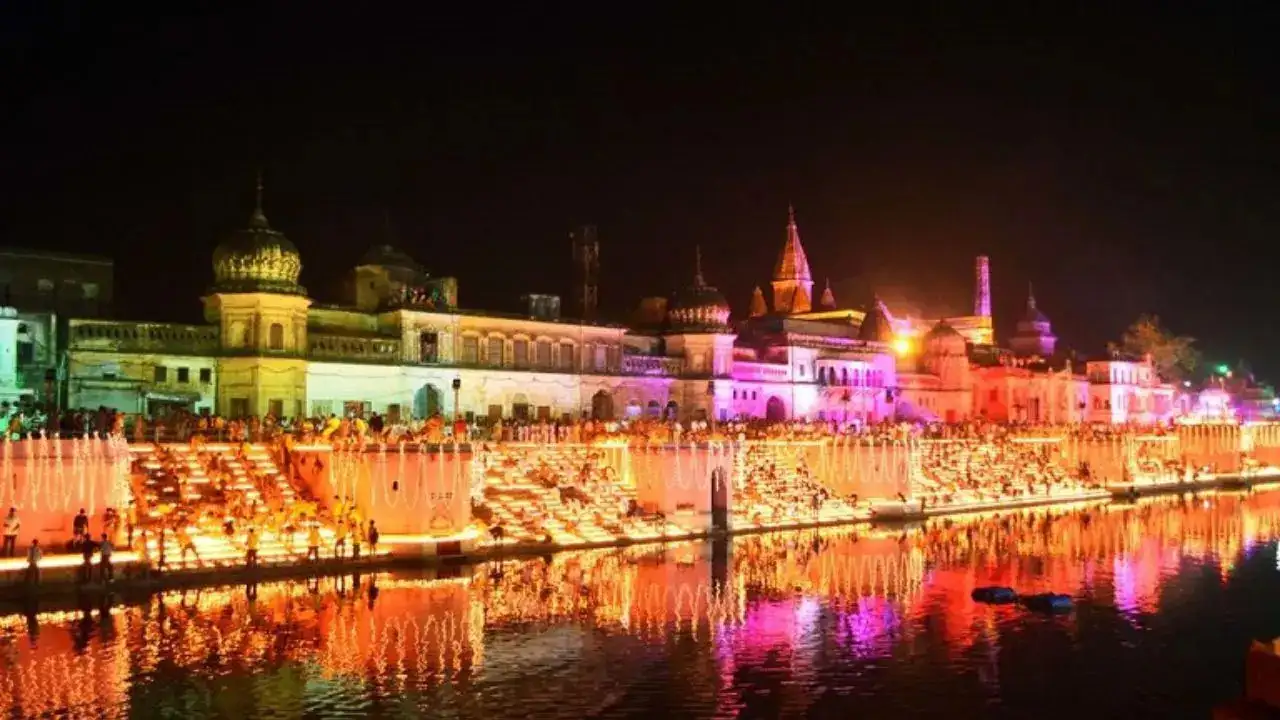By Mallika Bhagat
Copyright timesnownews

Ayodhya might be a small city compared to other spiritual destinations in India, including Varanasi, which is often the epicenter of all religious fervour, it’s value is incomparable on the country’s cultural map. Believed to be one of the oldest cities in India, Ayodhya traces its origins to the Ikshvaku dynasty. Ramayana immortalised the city as the birthplace of Lord Ram, whose return to the city after 14 years of exile is said to have marked the first Diwali. Each year, as part of Deepotsav, Ayodhya lights up with millions of diyas, which straddle the pathway along the banks of the Sarayu River, and has quickly become an enduring part of India’s iconography, especially since the inauguration of Ram Mandir. This year, Diwali is being celebrated on October 20th, 2025. Diwali In AyodhyaIn Ayodhya, the main celebration takes place at Ram Ki Paidi, where volunteers light rows of diyas along the ghats of the Sarayu River. The Ram Temple, Hanuman Garhi, and Kanak Bhavan are decorated with lights and flowers. Cultural performances, processions, and a grand aarti (prayer ceremony) take place throughout the evening. While the celebration is spiritual, it’s also tightly organised, managed by thousands of volunteers and monitored by local authorities for safety and crowd control. How To Reach AyodhyaBy Air Ayodhya’s Maharishi Valmiki International Airport connects to Delhi, Mumbai, and several other cities. Lucknow Airport, about 125 km away, is a reliable alternative with frequent connections and good road access. SpiceJet has also recently launched special non-stop flights to Ayodhya from four major cities: Delhi, Bengaluru, Ahmedabad, and Hyderabad, just in time for Diwali celebrations. By Train Two stations, Ayodhya Junction and Ayodhya Cantt, connect the city to major metros including Delhi, Varanasi, and Kolkata. The train ride from Lucknow takes about three hours. By Road Highways from Lucknow, Varanasi, Prayagraj, and Gorakhpur lead directly to Ayodhya. Buses and taxis are available year-round, though travel times can increase during festival days. Places To Visit In AyodhyaOver centuries, Ayodhya has seen Buddhist, Jain, and Mughal influences, and was later part of the Nawabi region of Awadh. Its landscape today reflects those layers – temples from different eras, narrow lanes lined with small shrines, and the newly built Ram Mandir that dominates the city’s skyline. Ram Janmabhoomi TempleCentral to all Ayodhya itineraries is the newly-opened Ram Janmabhoomi Temple, the consecration ceremony of which made the city the biggest travel hotspot in the state. The site of Ram Janmabhoomi, believed to be the birthplace of Lord Ram, is beautifully decorated, and special prayers and rituals take place, attracting thousands of devotees. Hanuman GarhiPerched on a hill, this ancient temple dedicated to Hanuman offers panoramic views of Ayodhya. Locals share how Lord Hanuman lived here to guard Ayodhya. The temple bears a beautiful idol of Lord Hanuman in his child form (bal roop) sitting on the lap of his mother, Mata Anjani, making this temple a popular pilgrimage spot, especially during Diwali when devotees flock to seek blessings. Gulab BariGulab Bari is a rose garden and mausoleum in Ayodhya, Uttar Pradesh. It houses the tomb of Nawab Shuja-ud-Daula, the third Nawab of Oudh. Known for its beautiful roses and peaceful atmosphere, Gulab Bari is both a place of worship and a cultural hub. Legend has it that the monument is connected to a well in Lucknow and was once a hiding place for the Nawab’s successors. Nageshwarnath TempleThis temple in Ayodhya, located on Ram ki Paidi, is believed to have been established by Kush, Lord Ram’s son, and is dedicated to Lord Shiva. Legend says it was built for a Nag-Kanya who loved Kush after finding the armlet he lost while bathing in the Sarayu river. The temple has been rebuilt several times, with the current structure dating back to 1750. Shivratri is a major festival here, attracting thousands of devotees. Dashrath MahalLocated at a short distance from Hanuman Garhi, the historical Dashrath Mahal was the abode of King Dashrath, and is the place where Ram spent his childhood with his family. Inside the mahal, there is a shrine of Lord Ram, Lakshman, and Sita. The palace showcases intricate architecture and is a must-see for history enthusiasts. Travel News – Find latest news and tips based on Indian and World travel including top 10 travel destination, tourism information, how to reach visit and more at Times Now.